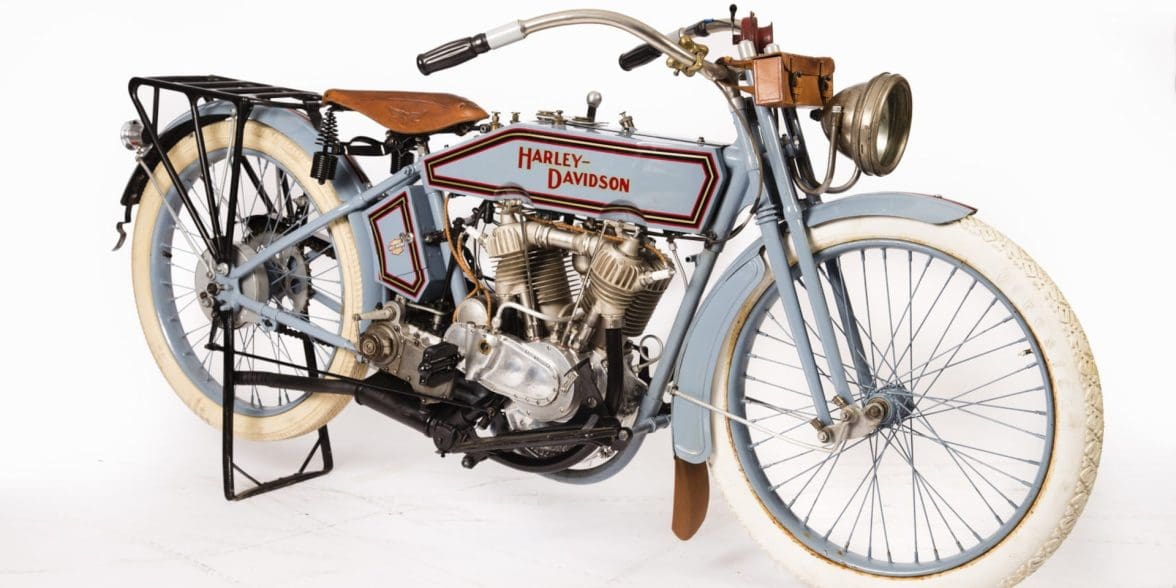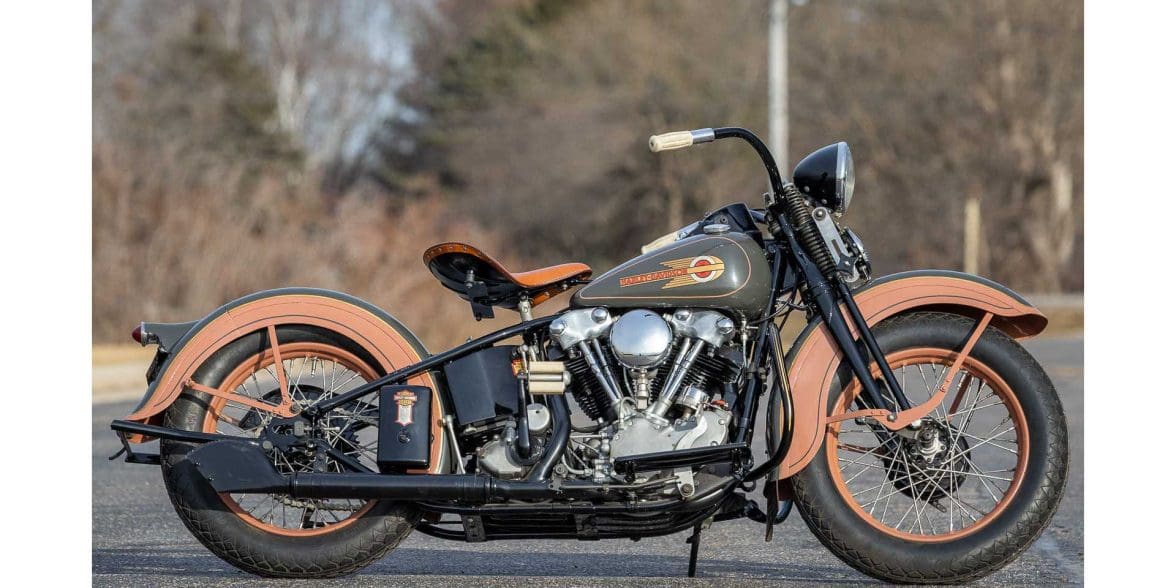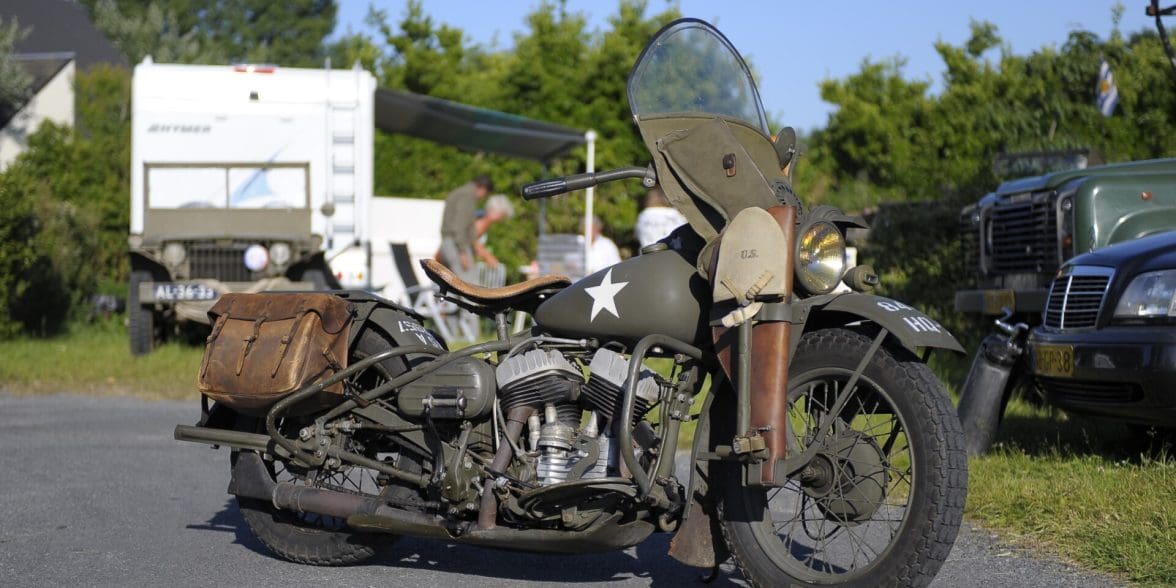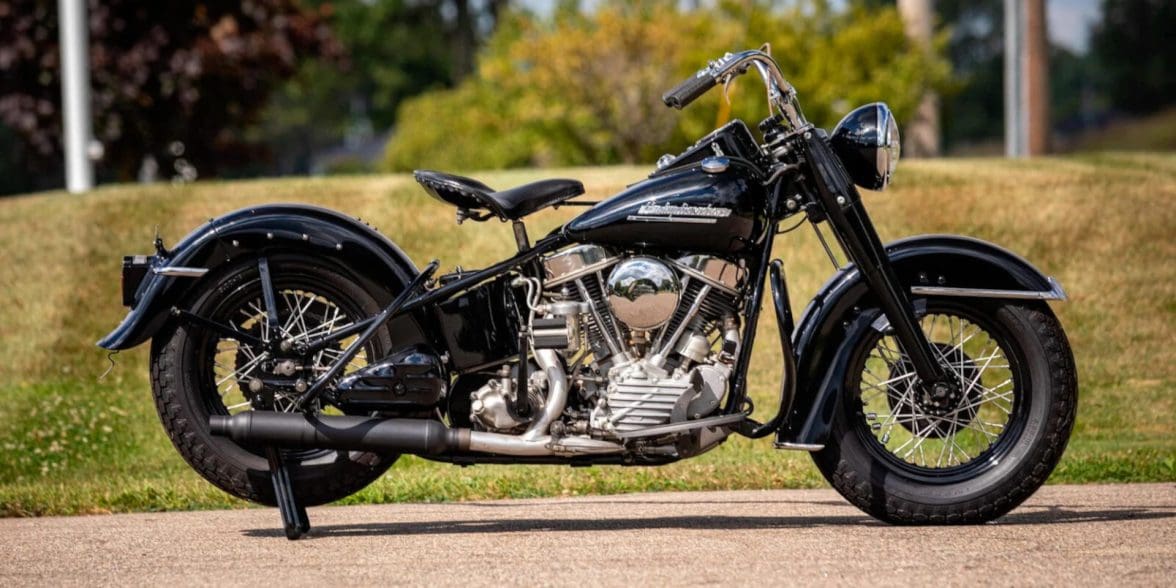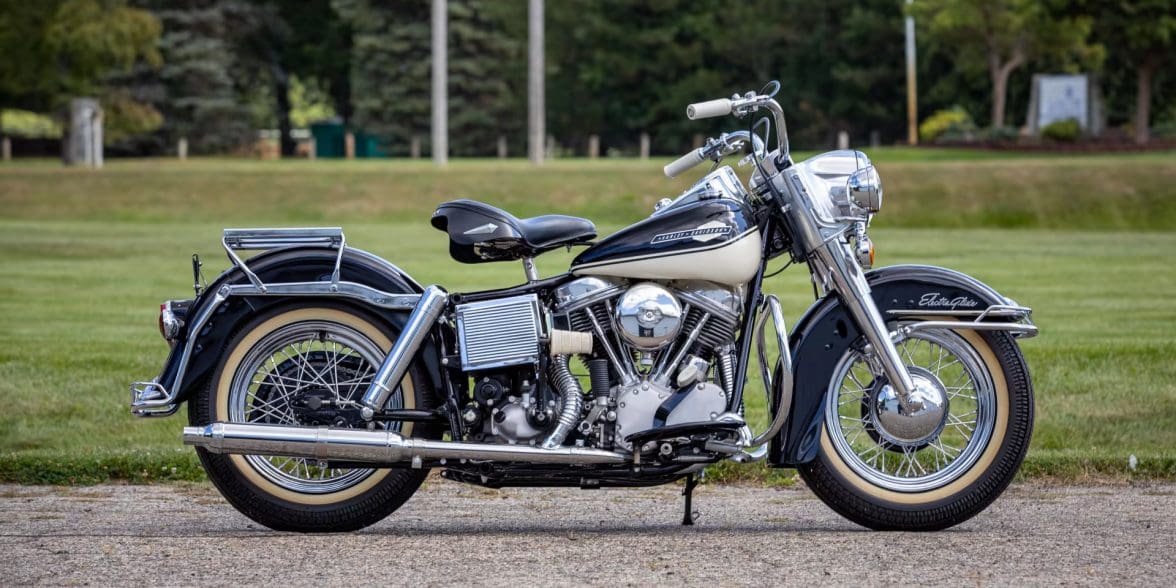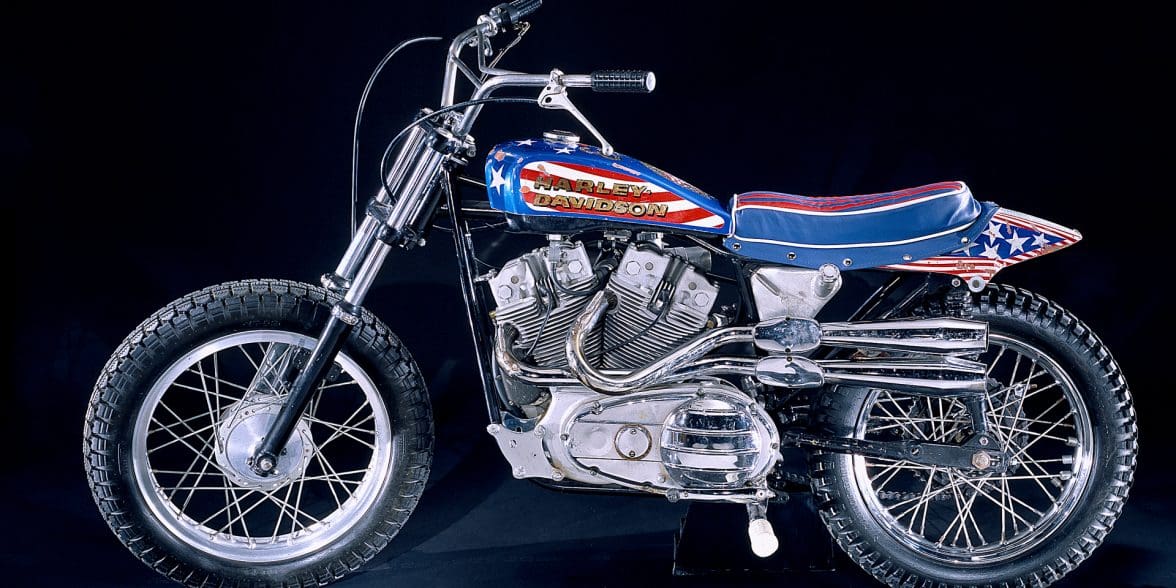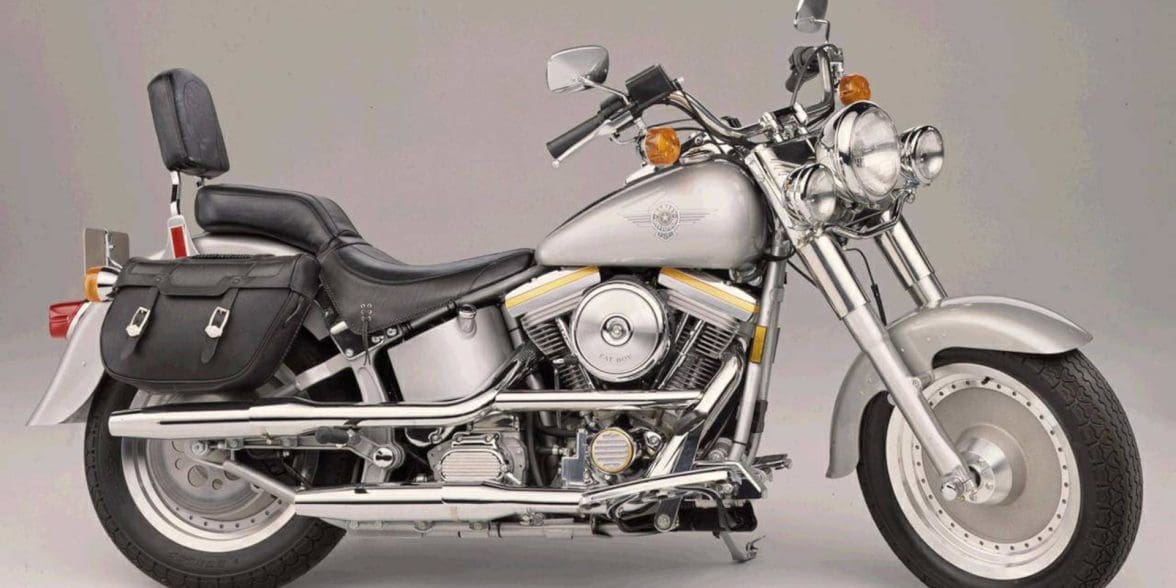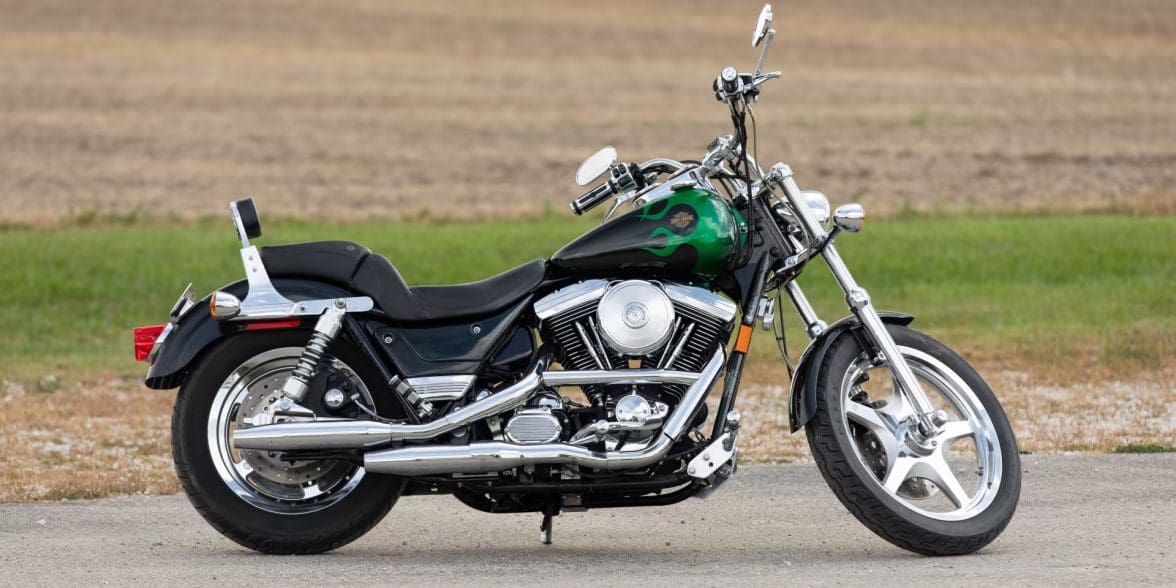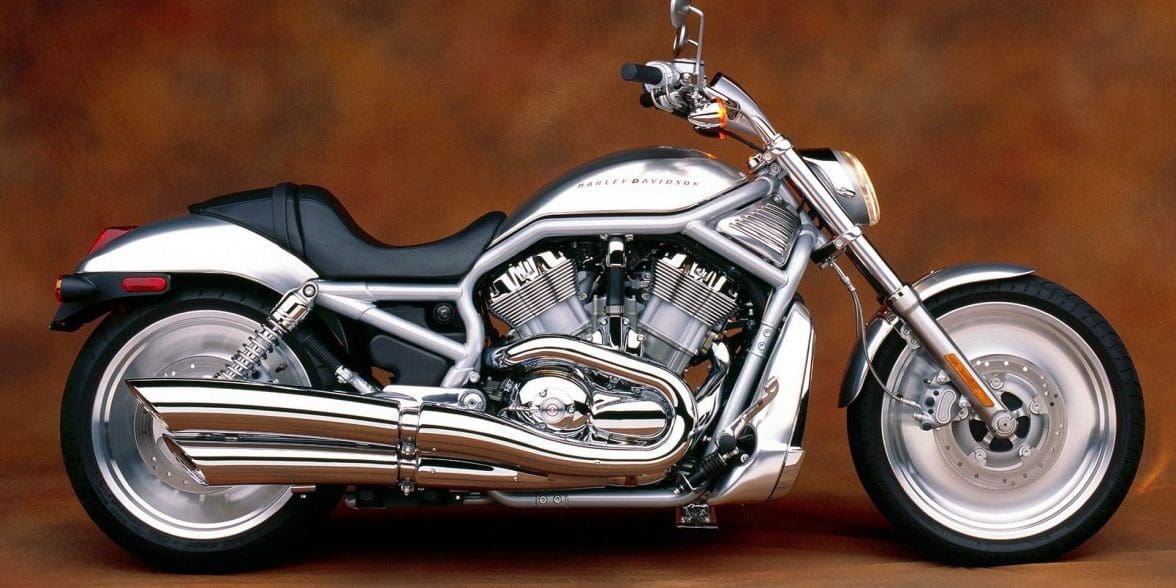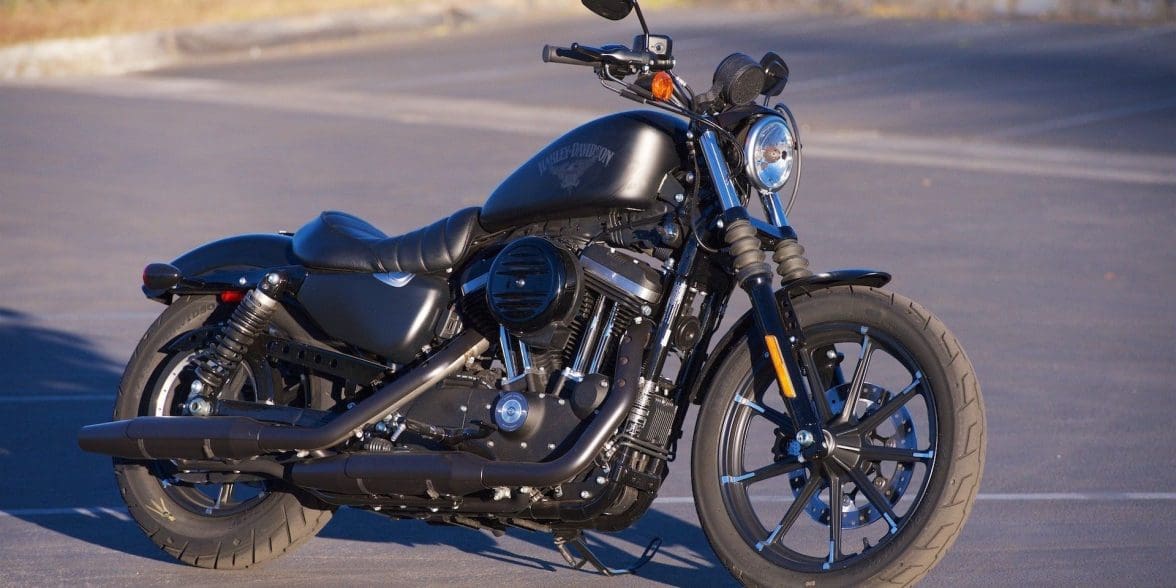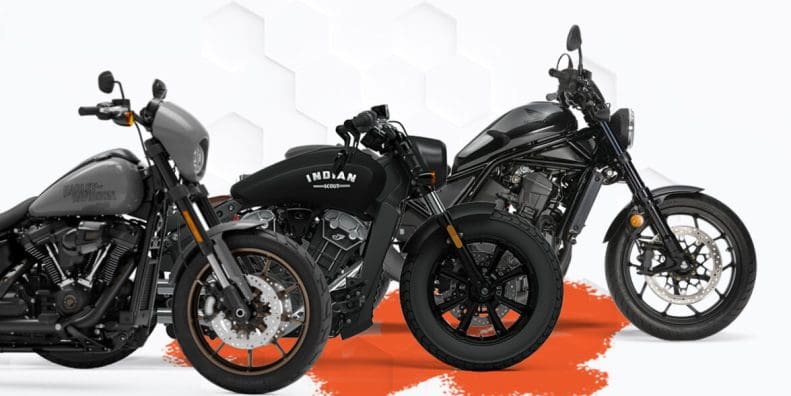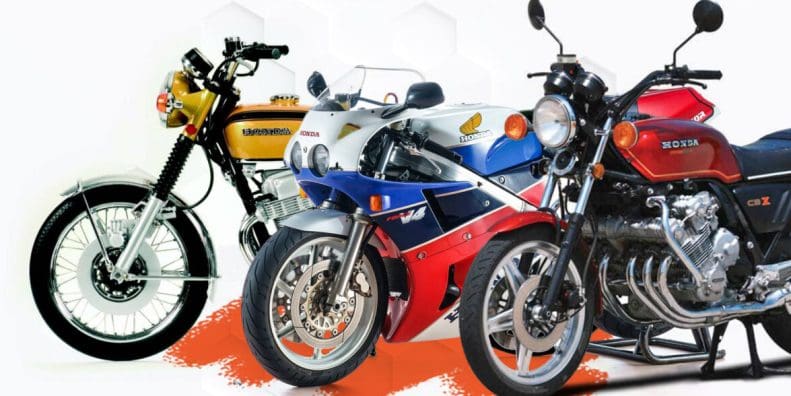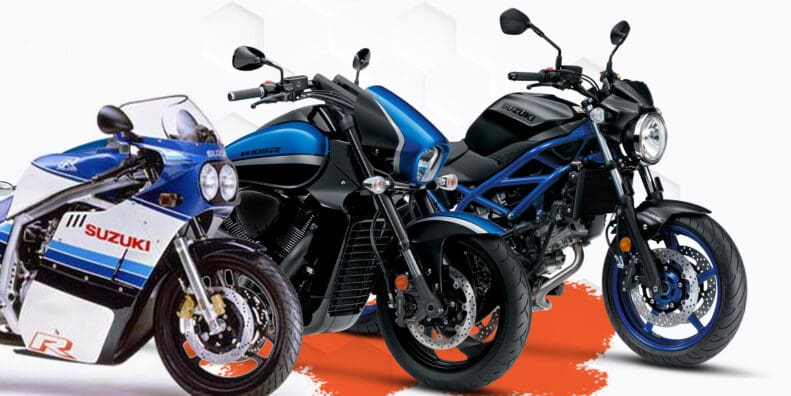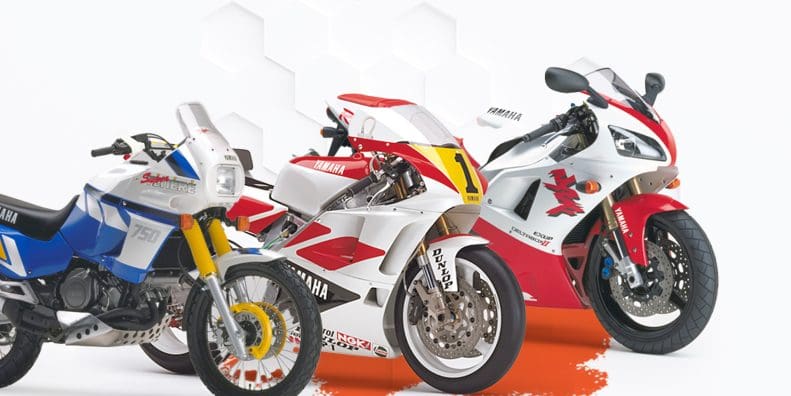The Best Harley-Davidson's Ever Made [2024 Edition]
Updated September 7, 2023 by Simon Bertram
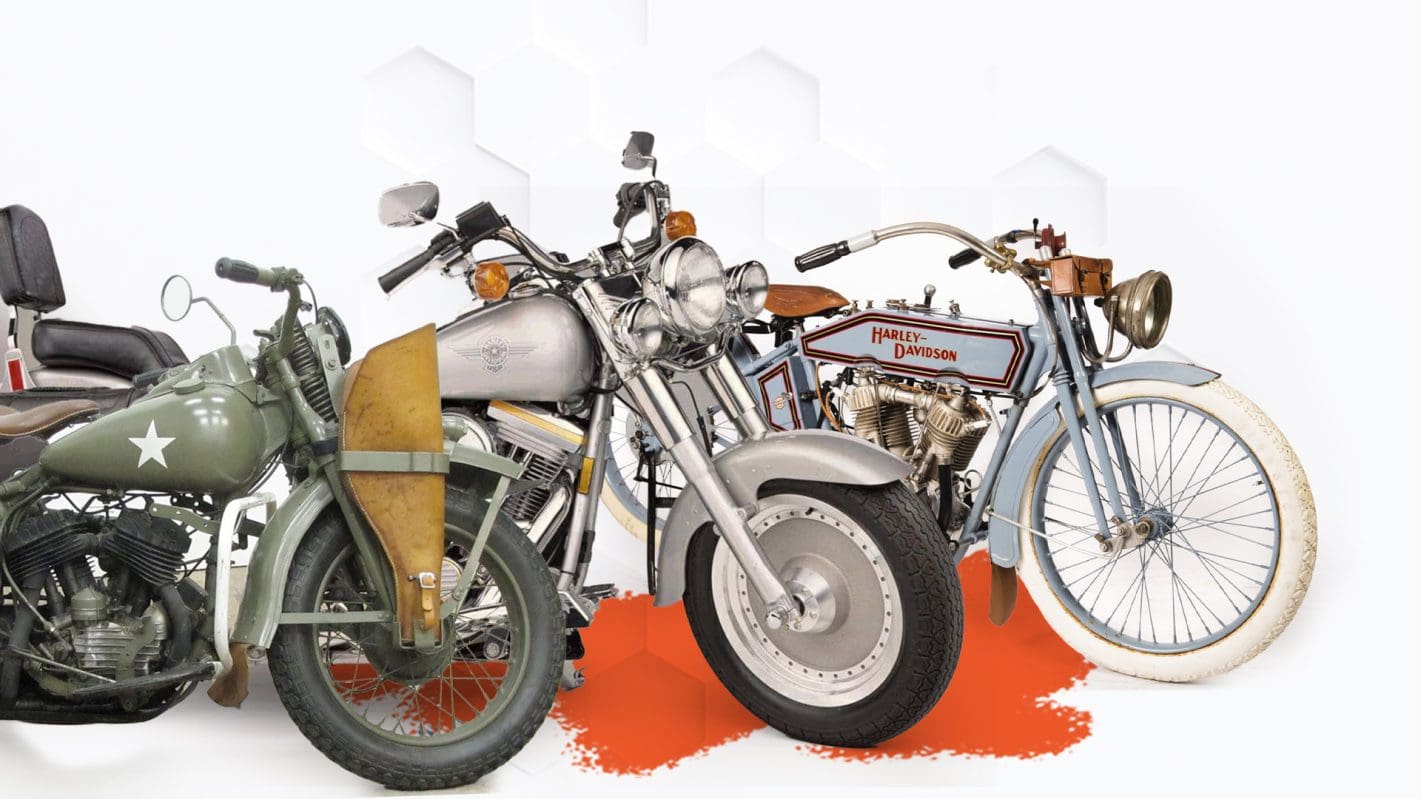
A Long & Storied History Of American Iron
American Iron is what most cruisers made in North America get called, although when most people use it, it's referencing Harley-Davidson motorcycles. One of the longest running motorcycle companies in the world, with well over a century of productions, the company out of Milwaukee has seen two World Wars, the Great Depression, the hippie movement, the dawn and dusk of the Space Shuttle... they've been around throughout history, and have made a ton of models to match the times.
Most American riders associate being on two wheels with freedom and rebellion, and while many might choose a supersport or ADV or even a touring bike, there is still a disproportionate amount of cruisers sold across North America, anywhere from 35 to 50% of sales per year. Even the thought of a cruiser, be a it power cruiser, a sport cruiser, even a touring cruiser, just resonates with that idea of freedom, of feeling the wind on your face as you rumble away the miles.
Because of the immense history of Harley-Davidson, we can't list absolutely every model that has significance, or this would be a 100 page book! Instead, these are the 10 best Harley-Davidson's that we, in our subjective opinion, think were ever made.
About Our Selections
These selections only had one criteria to meet: Be made by Harley-Davidson. No other criteria mattered
1915 Harley-Davidson 11F
A bike Harley and Davidson were so proud of, they guaranteed its 11 HP in writing with each bike
Why We Picked It:
In a choice that should surprise exactly no one, this list starts off with one of the most significant motorcycles that Harley-Davidson ever made. The 11J model was a very popular motorcycle, but sold for a staggering $310, making it out of reach for even some wealthy customers, and mostly because of its headlight.
Harley-Davidson made the choice to remove the complicated electrical headlight and replaced it with an acetylene-burning version. Yes, in those days you had to actually light your headlights. Named the 11F, it sold for a stupendous $35 less than the 11J, and put it much more in reach of many customers.
Those customers loved their bikes, as it had a slick three speed hand shift transmission, a mechanically driven oil pump, and the best part of all, it had 2 more horsepower than the 11J, jumping from 9 HP to 11 HP, from its 1,000cc V-twin. Harley-Davidson were so proud of the bike and the advancements made for it that with each bike sold, they signed a certificate that guaranteed the engine would provide all 11 of those horses.
Specifications:
Price: $275 in 1915 ($8,320 in 2023)
Engine: 1,000cc (61 ci) V-twin
Power: 11 HP (Guaranteed!)
Torque: Unknown
Transmission: 3 Speed Hand-Shift Manual
Curb Weight: 325 lbs
Strengths:
Significant in the fact that it made a Harley-Davidson somewhat affordable for the common man
Removed the complicated electrical headlight of the 11J, but kept the electric tail light. The headlight instead burned acetylene, having to be lit by the right before they set off on their ride
Learn More:
1936 Harley-Davidson EL Knucklehead
The first bike with the famous knucklehead V-twin, which means it was the first bike with overhead valves for Harley-Davidson
Why We Picked It:
Think about the time period that this bike came out in. After the Great War and at the tail end of the Great Depression, motorcycle companies had gone under in droves, with only Indian Motorcycles and Harley-Davidson having weathered the storm. Yet, Indian was pulling ahead in sales, as their bikes were faster and much more reliable.
Harley-Davidson engineers thus got together and narrowed down what really drove reliability: Lubrication and efficient combustion. Dry sump technology was still new at the time, and William Harley knew that the sidevalve big-twin debacle of the previous years meant that change was needed.
The solution was to mount the valves on the top of the cylinders, but to make room for them and the cams, the heads of the V-twin would need to be lifted and shaped. The new "Overhead Valve" system worked a treat, but the new engine leaked so much oil that the bike almost didn't make it to market. However, solutions were found, and with the distinctive shape of the cylinder heads, the famous Knucklehead V-twin was born.
Specifications:
Price: $380 in 1936 ($8,360 in 2023)
Engine: 988cc (61 ci) knucklehead V-twin
Power: 40 HP
Torque: Unknown
Transmission: 4 Speed Hand-Shift Manual
Curb Weight: 565 lbs
Strengths:
The first overhead cam and valve V-twin from Harley-Davidson
Produced respectable power, and also made it one of the fastest Harley-Davidson's of the time, capable of getting up to 90 to 95 MPH. This was important as Indian had been taking the speed crown for many years, and this brought the two companies closer to parity in terms of top speeds
Learn More:
1940 to 1945 Harley-Davidson WLA Liberator
A bike that served reliably in World War 2 and literally earned its stripes for its service
Why We Picked It:
If this list did not have the WLA Liberator in it, it wouldn't be complete, simple as that. It was one of the USA's most significant contributions in terms of vehicles to the European theater of war, with over 10,000 being shipped over. It was tough, reliable, could be fixed with a hammer and a very emphatic curse word, and could ride on almost any surface.
They were not used for front line service, instead being used for courier duties, military police patrols, and escort duties. It was especially in the courier duties that it paid dividends, as the streets and roads of Europe in the 1940s were often tight, twisting, and narrow, and whereas a Willis Jeep might get stuck, the WLA Liberator could snake its way through and get the messages, documents, or other items through quickly and reliably.
After the war ended, many of the bikes that came back to the USA were bought up by soldiers and converted for civilian use, making the original olive green paint job with the stenciled white star on the tank exceedingly rare. Nowadays, they are mostly in private collections or museums, where they can be appreciated for what they are.
Specifications:
Price: Unknown
Engine: 739cc (45 ci) flathead V-twin
Power: 25 HP
Torque: 44 lbs-ft
Transmission: 3 Speed Hand-Shift Manual
Curb Weight: 600 lbs
Strengths:
While not used on the front lines, were nonetheless vital to the war effort for their reliability, ease of maintenance and repair, and ability to go many places even a Willis Jeep couldn't
Very rare to find one in original condition and setup, as thousands were bought by returning soldiers and converted for civilian use. An original, in any condition, is considered a "unicorn" bike for any Harley-Davidson collector.
Learn More:
1949 Harley-Davidson Hydra Glide Panhead
Simply the best looking Harley-Davidson ever made, from every angle
Why We Picked It:
The saying goes that beauty is in the eye of the beholder, but to pretty much anyone that beholds a 1949 Harley-Davidson Hydra Glide Panhead, beauty is defined. It is a simplistic motorcycle, with very little in the way of fairings or even panels. It has a mudguard over each wheel, a tank, a saddle, a frame, and a big chunky V-twin slung low and forward.
It is simple, but it also is perfect. Every angle, every line, every curve, just everything about it is beautiful. No muss, no fuss, no frills, no extraneous flairs or such. From any angle, from every angle, it is the definition of American iron, the image that most non-riders have of an American cruiser when you ask them to point one out in a lineup.
Yet, it was also significant in that it carried the all-new panhead engine, an evolution of the knucklehead. With the oil leak problem fixed almost a decade ago, the biggest thing about the panhead was that it introduced two very important technologies which are still used, in a modified form of course, today.
Those technologies were the pushrod activated valves that gave it the now-classic burble we think of from Harley V-twins, and the hydraulic self-adjusting tappets, which constantly adjusted the valve spacing instead of having to disassemble the engine every 10,000 miles to adjust them manually. In effect, if a panhead engine is maintained properly, it will run forever, and many that are still running today have not had their valves manually adjusted at any point.
Specifications:
Price: Unknown
Engine: 1,213cc (74 ci) panhead V-twin
Power: 55 HP
Torque: ~62 lbs-ft
Transmission: 4 Speed Hand-Shift Manual
Curb Weight: 588 lbs
Strengths:
Beautifully simple. It put the panhead engine on display as the central feature of the bike, and had little to distract from it
The shape of the Hydra Glide defined for nearly half a century what most people would think of when asked what they thought an American Cruiser motorcycle looked like.
Given its name by the hydra glide suspension, which was an evolution of previous suspension technology to provide a buttery smooth ride for long-distance cruising
The panhead engine was the first to have the now-classic Harley burble and also the first to have self-adjusting valve tappets
Learn More:
1965 Harley-Davidson FLH Electra Glide
The last of the panheads, and the first Harley with an electric starter
Why We Picked It:
Throughout the years, the FL line of motorcycles from Harley-Davidson have carried important innovations, upgrades, and ideas, but the 1965 Electra Glide was the most significant of them all.
Apart from being the last bike to carry the panhead V-twin, and the "Big Twin" version of it at that, the Electra Glide's contribution to Harley history is it being the first model to carry an electric starter. It was also be argued that the Electra Glide was the first fully touring-oriented motorcycle, as it had a massive 5 gallon "Turnpike" tank fitted, and had accessories available that included saddlebags, a full windshield, and the like.
The other significant upgrade that the Electra Glide received was a 12 volt battery, up from the standard 6 or rarer 9 volt batteries used to date. It needed the extra juice for the starter, but it also allowed for a powerful headlight to be fitted for nighttime riding, another innovation for long-distance touring.
While a full touring motorcycle wouldn't be officially created until the "Tour Glide" models such as the 1971 Super Glide, it was the Electra Glide that set the standard and forged the path for one of Harley-Davidson's more popular niches today.
Specifications:
Price: $9,104
Engine: 1,212cc (74 ci) panhead V-twin
Power: 55 HP
Torque: ~70 lbs-ft
Transmission: 4 Speed Manual
Curb Weight: ~720 lbs
Strengths:
The first Harley with an electric starter. It was still fitted with a kick-starter as a backup
Arguably the first full touring oriented Harley-Davidson. A long distance fuel tank, accessories that focused on touring capability and comfort, and a powerful headlight meant to light more of the road at night in case you had to ride into the evening.
Was the last Harley to carry a panhead V-twin, and only for its first year before it was replaced with the shovelhead
Learn More:
1970 Harley-Davidson XR-750
Only two words are needed, and those two words form a name: Evel Knievel
Why We Picked It:
While originally designed to be a racing bike, the 1970 Harley-Davidson XR-750 flat track racer is famous for an entirely different reason. Those that grew up in the 1960s and 1970s bore witness to a madman in a crash helmet and a star spangled outfit, the tank of his bike painted in the stars and stripes, and they would often see this man soar over busses, bridges, rivers, and pretty much anything else that could be jumped. The XR-750 is famous because of Evel Knievel.
Sporting a 748cc air-cooled V-twin, the XR-750 put down a respectably 82 HP and weighed only about 310 lbs wet, making it one of the lightest bikes Harley-Davidson made. It also was very well sprung in terms of suspension, although daredevils would add a little more suspension travel and damping, as it was designed to have the tail kicked out and be sliding sideways around a bend, so it couldn't be too stiff as that could cause the rear tire to dig in and flick the rider off in a highside.
From 1970 to 1976, Evel Knievel successfully jumped his XR-750 multiple times, including his longest jump at the time of 129 feet over 19 cars. He crashed his original XR-750 in 1975 when attempting to jump 120 feet over 13 busses, but five months later, on another XR-750, he set the world record that stood for 25 years of 133 feet over 14 busses.
Demand for a street legal version was met with a slow response from Harley, although they did eventually release a version of it as the XR-1000 Sportster. It was too late, however, as better bikes had come along by then, so it has been chalked up as one of H-D's biggest misses.
Specifications:
Price: Unknown
Engine: 748cc V-twin
Power: 82 HP
Torque: Unknown
Transmission: 4 Speed Manual
Curb Weight: 310 lbs
Strengths:
A very good flat track racer, with a Tourist Trophy model as well as the XR750TT, but most famous for being the favorite bike of many a daredevil, including Evel Knievel
Was very easy to modify, which many people did for either racing or daredevil work
Harley-Davidson eventually released a street-legal version as the XR1000 Sportster in 1983, but by then other bikes had been released, some even from Harley themselves, that made it mostly obsolete. This has been chalked up as one of the big misses in H-D's history, as they quite literally had free marketing all through the 1970s
Learn More:
1990 Harley-Davidson Fat Boy
It was the USA in a steel frame and big honking V-twin engine. Being the star motorcycle of Terminator 2 didn't hurt, either...
Why We Picked It:
If anything in 1990 screamed "AMERICA," it was the Harley-Davidson Fat Boy. Based on an 82 ci V-twin softail, Wille G. Davidson, with assistance from Louie Netz, absolutely nailed the stance, the grunt, the poise, and the power that people associated with American iron, and in many respects the USA itself, around the world. It was quite literally a bike that you could show anyone in the world, and no matter where you were, they would say "That's American."
Of course, a lot of the world was able to see exactly what the solid-wheeled chunky bike was all about in 1991, as it was the hero vehicle of a cyborg in a small movie called Terminator 2: Judgement Day. All of a sudden, the rumbling burble of Harley-Davidson was the soundtrack to some of the best action and chase sequences in the summer blockbuster season that year.
On that note as well, when a motorcycle can make even Arnold Schwarzenegger look positively average astride it wearing sunglasses at night, you know it's a big, fat bike that just oozes cool.
Specifications:
Price: Unknown
Engine: 1,337cc (82 ci) V-twin
Power: 67 HP
Torque: 72 lbs-ft
Transmission: 5 Speed Manual
Curb Weight: 705 lbs
Strengths:
One of the most classic Harley-Davidson silhouettes of the late 20th century
Was a big, beefy bruiser of a bike meant to represent American iron wherever it went
Was the hero bike of Terminator 2, which made it an instant icon and gave it cult collector status
Many are still available on the used market and at auctions for more famous bikes, such as stunt bikes or stand-in bikes used for T2
The hero bike that Arnold Schwarzenegger rode recently sold at auction for over $500,000 USD
Learn More:
1999 Harley-Davidson FXR3 CVO
It's those last three letters that make this a classic model: Custom Vehicle Operations
Why We Picked It:
The FXR CVO models are not often brought up in the "Best Harley's Ever Made" lists around the internet, and we are left scratching our heads as to why. In 1999, the Harley-Davidson FXR Dyna had already been out of production since 1995, yet many customers still loved the bike and asked when a new version would be coming out. This was also around the time that the aftermarket and custom bike scene started to really gain steam in mainstream media, and so Harley created Custom Vehicle Operations to start making a "new" FXR, but with about $4,000 worth of custom parts added to each one.
It was the second generation of the FXR customs, the FXR3 CVO, that really grabbed people's attention. With 900 FXR2's and 900 FXR3's, the limited edition nature of the bikes garnered attention, although many wait to see what the first version would be like. It was built around the 80 ci Evolution V-twin, which had rubber bushings on its mounts to smooth out body vibrations, and a very taut and stiff frame so that it handled more like a Sportster than a Dyna.
But what is a custom Harley without a two tone flame paint job on the tank? Only the FXR3 CVO's had them, as well as the new 5 spoke cast ThunderSTar wheels, a new and bespoke seat just for the FXR3, taller sissybar than the Dyna, chrome trimmed sidecovers, and braided steel control cable and tubing sheaths.
As a limited edition version of what Harley-Davidson considered the ultimate custom, it deserves its place on this list for showing that they can, sometimes, go crazy in the best ways.
Specifications:
Price: $17,995 in 1999 ($33,000 in 2023)
Engine: 1,340cc (82ci) Evo V-twin
Power: ~65 HP
Torque: ~75 lbs-ft
Transmission: 5 Speed Manual
Curb Weight: 611 lbs
Strengths:
The "final version" of the FXR Dyna that had been around since the mid-1980s, with about $4,000 worth of upgrades and special parts made just for the FXR3 CVO added
Was Harley's way to try to claw back some business from the aftermarket and custom bike side of things, at a time when customized and upgraded bikes were gaining mainstream media attention
Only 900 were made
The FXD Dyna was the replacement of the FXR Dyna a few years into the new millennium, but many still covet the FXR2 and FXR3 CVO bikes as collectors items
Learn More:
2002 Harley-Davidson VRSCA V-Rod
The first, the best, the legend. The ultimate drag bike from the factory in Harley-Davidson history
Why We Picked It:
We'll admit, the V-Rod may not have been the most popular or even the most desirable of Harley-Davidson's many models during the 2000s. However, it is significant because of the impact it made, and it also allowed a new word to enter into the lexicon: Performance.
Before 2002, if you wanted a "performance" Harley... you bought a Buell. However, because of providing engines for Buell for so long and refining them more and more, the Revolution V-Twin engine was made. Suddenly, this 1,130cc (69 ci) engine was chucking out 115 HP and 84 lbs-ft of torque, revving all the way up to 7,000 RPM, and tearing up the drag strip without needing any modifications.
It probably helped that the Revolution engine was developed with assistance from a small little company named Porsche from Germany, so every single inch of its 69 cubic inches of displacement were optimized for power and performance. It didn't sell quite as well in the USA and Canada as Harley hoped, but it was an absolute smash hit overseas, where people were celebrating it as a bike from America that finally had the performance to match its looks.
Specifications:
Price: $16,995 in 2002 ($28,875 in 2023)
Engine: 1,130cc (69 ci) Revolution V-twin
Power: 115 HP
Torque: 84 lbs-ft
Transmission: 5 Speed Manual
Curb Weight: 660 lbs
Strengths:
The most powerful bike from Harley-Davidson for a good few years in the early 2000s
Not a smashing sales success in the USA or Canada, but overseas it sold extremely well, celebrated for having the performance to match its looks
Was a capable drag bike straight from the factory, and could accelerate from 0 to 60 in just about 3 seconds, despite its 660 lbs wet weight.
Learn More:
2016 Harley-Davidson XL883N Iron 883
The one bike that introduced the Harley-Davidson badge to an entire generation of new riders
Why We Picked It:
For the longest time, unless you were a hardcore Harley-Davidson enthusiast, the bikes from Milwaukee were often seen as "old man" motorcycles, or midlife crisis items that were cheaper than a Porsche to buy but still cost a pretty penny. In effect, Harley-Davidson needed something to attract a new generation of riders with, something that would have them turn away from the Japanese and European bikes and go "hey, yeah, there is a good bike out of America I can ride."
That bike was the 2016 (discontinued in 2022) Iron 883. Based on the Sportster silhouette, it had all of the elements of a Harley, but brought bang up to date. It had all the electronics and rider aids a new rider wanted, it had comfortable midmount pegs, the bars were easy to reach, and it didn't weight two tons so it was agile and even flickable in the right conditions.
Despite being geared up to the teeth with rider aids, it also was pared back and stripped down in terms of information and controls. It was a bike you could learn riding on without having to focus on not hitting 17 different switches on the left button box. It communicated the road better than most Harley's at the time, and it definitely was a sports cruiser with is throttle response and noise.
It worked, too. All of a sudden, new riders were popping up all over the place astride their shiny new Iron 883s, and Harley-Davidson has kept that theme going with the new 2024 Nightster, which is targeted at the same new-rider crowd that are getting their licenses and looking to have a fun ride down the road of life.
Specifications:
Price: $11,249 (2022)
Engine: 883cc V-twin
Power: 49 HP
Torque: 53.8 lbs-ft
Transmission: 5 Speed Manual
Curb Weight: 564 lbs
Strengths:
Immensely forgiving for a new rider, with a very predictable and smooth power curve
Turned H-D bikes from a midlife crisis and "old man" touring bikes into a exciting, "cool" new urban sport cruiser
Surprisingly communicative, with a rubber mounted engine to eliminate vibration interference from the V-twin. Some reviewers have described it as almost having sport naked levels of feedback to the rider
Was priced to be affordable for those looking in the sport touring, adventure touring, and supersport markets, adding a new option of a sport cruiser for them to consider.


